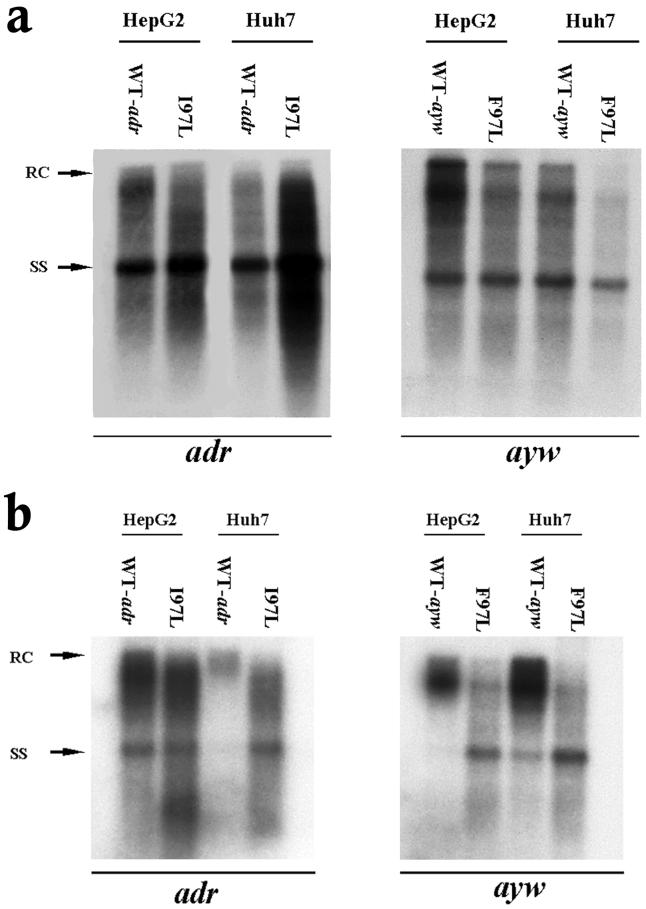FIG. 1.
Significantly increased viral DNA synthesis and virion secretion of HBV adr capsid mutant I97L in Huh7 cells but not in HepG2 cells. (a) Ten micrograms of each plasmid DNA was transfected into HepG2 and Huh7 cells. Intracellular core particles were harvested 5 days posttransfection, and the core particle-associated DNA was analyzed by Southern blot analysis with a 3.1-kb adr subtype or ayw subtype HBV probe. In comparison with wild-type HBV (WT-adr), there was at least a fourfold increase in overall DNA signal for mutant I97L in Huh7 cells, while in HepG2 cells, wild-type adr and mutant I97L did not exhibit any significant difference in replication (left panel). In contrast to subtype adr, the overall DNA signal of wild-type ayw HBV was about twofold stronger than that of the mutant F97L in both HepG2 and Huh7 cells (right panel). (b) Mutant I97L secreted more HBV virions than wild-type adr in Huh7 cells but not in HepG2 cells (left panel). This phenomenon was not observed in mutant F97L in the HBV ayw subtype (right panel). Viral particles were purified from the medium through a 20% sucrose cushion, and the HBV Dane particles were then separated by isopycnic gradient centrifugation through a 20 to 50% (wt/vol) cesium chloride gradient. Dane particles were collected according to their buoyant densities. Extracellular HBV DNA was extracted and subjected to Southern blot analysis. Full-length relaxed-circle form (RC) HBV DNA at 4.0 kb and single-stranded (SS) HBV DNA replicative intermediates at 1.5 kb are indicated by arrows.

